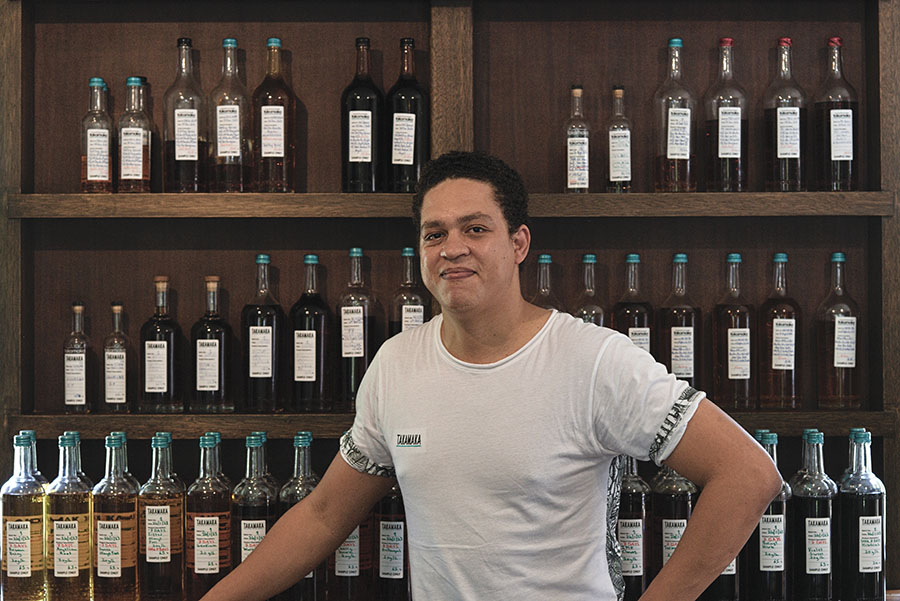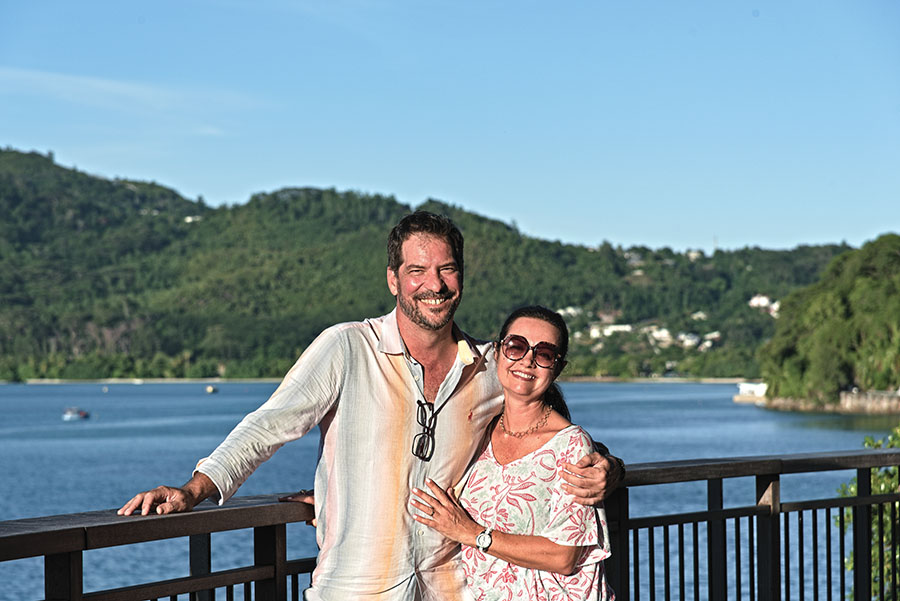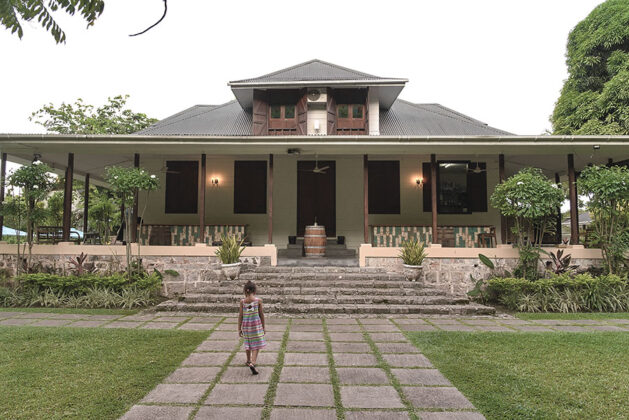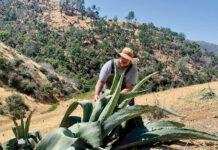Distilling rum in the Seychelles, a lush, tropical archipelago nation located northeast of Madagascar and about 1,000 miles off the Kenyan coast, comes with a few perks.
Rum can be mixed with the same delectable produce enjoyed by the country’s gigantic fruit bats. The shoe closet is unlikely to ever require anything other than a pair of colorful flip-flops. And, perhaps most importantly, the view from the office resembles the cover of a glossy travel magazine.
Yet it presents its own unique set of challenges, too. The Seychelles never managed to turn its historically significant sugarcane cultivation — central to the country’s economy in colonial times — into a vibrant rum-making industry. In a place like this, creating a rum industry essentially means building it from the ground up. Which is precisely what Takamaka Distillery founders, brothers Richard and Bernard d’Offay, embarked on a couple of decades ago. Both native Seychellois, they spent their childhood in South Africa before returning to Mahé, the largest island in the Seychelles, with the intention of making rum. What was initially a rather humble enterprise turned into a noteworthy operation that single-handedly put the Seychelles on the global rum-making map.
A Focus on Seychellois Sugar Cane
After initial attempts, including using their backyard swimming pool as a temporary cooling tower for their makeshift condenser, the brothers took a significant step in 2008 when they set up their headquarters at La Plaine St. André, a historical site dating back to 1792 situated in the southeast of Mahé.
The site comprises two separate distilling areas, one dedicated to sugarcane juice and one to molasses, and a small underground barrel room. Alongside the production facilities, La Plaine St. André offers plenty of attractions to incoming visitors, including a tasting room, a small museum, a botanical garden, and a cozy cocktail garden.

The brand’s journey began with molasses sourced from within the Indian Ocean basin. To this day, their flagship Seychelles Series, comprising white, overproof, coconut-flavored, and spiced rums, continues to be molasses-based. But when the d’Offays acquired the La Plaine St. André site, they gained the ability to work with sugarcane juice. “In 2009, we started getting serious about sugarcane,” says Richard d’Offay. “For us, having a rum with a sense of place, entirely grown, fermented, distilled, and aged in the Seychelles, is something very special.”
As the growing focus on malt and yeast selection among craft whiskey makers suggests, consumers are increasingly looking for spirits that convey a strong sense of place and authenticity. When it began working with local cane juice, Takamaka joined a rising number of distilleries worldwide, both in well-established or emerging cane rum–producing regions that recognize sugarcane juice as the ideal means to meet this consumer interest. In Barbados, for instance, influential brands such as Foursquare and Rémy Cointreau–owned Mount Gay have ventured into cane rum production in recent years. Meanwhile, Renegade, the Grenada-based rum project led by terroir enthusiast and spirits industry veteran Mark Reynier, exclusively concentrates on sugarcane juice and the cane’s specific origin.
Cane rum offers rum enthusiasts a spirit that not only can easily embody the essence of its origin, but can also provide the transparency that many rum enthusiasts often find lacking in the industry.
Cane in Short Supply
During its initial years of cane rum production, Takamaka handled nearly negligible quantities of raw material. “At the time, crushing 40 tons a year would be considered a win for us,” says Richard d’Offay. Today, having gradually increased its network of independent grower suppliers to 45, the team crushes over three times that amount.
Working in partnership with local farmers provides Takamaka with enough sugarcane to distill between 3,000 and 5,000 liters of rum at 65% ABV per year. While significant, this amount still accounts for a mere one cask of sugarcane rum a month, and no more than seven percent of the distillery’s total output.
This output is set to increase slightly this year, as the d’Offays have recently installed a brand-new crusher that extracts all the available juice from the sugarcane in a single crush, resulting in significantly increased yields. “With our previous crusher, we had to put it through twice to try to up the yield a little bit, which obviously from a labor perspective is not ideal. And still, we were probably getting just about 550 liters a ton,” explains Richard d’Offay. “Now we are consistently getting over 600 liters per ton, though this obviously depends on cane variety, Brix levels, and how much water is in the cane.”

Working with numerous small growers presents its share of significant challenges, too. Some farmers may lack the expertise required to meet the high standards expected by an internationally renowned distillery with sufficient consistency. Others may not possess the skills needed to optimize yields, or they might simply cultivate sugarcane on lower-grade land.
Beyond the technical obstacles, price is also a significant challenge for the team. The distillery pays its growers a minimum of 6 rupees ($0.47 USD) per kilo of sugarcane, “which is one of the highest sugarcane prices in the world,” according to Richard d’Offay.
Meanwhile, makers of baka, the local sugarcane wine, are willing to pay up to twice as much ($0.93 USD) as they can compensate for the cost by diluting the juice with water and sugar. Baka makers’ competition on price makes it imperative for Takamaka to offer incentives to farmers to maintain a stable supply of sugarcane. “We have definitely managed to convince more independent growers to plant sugarcane for us,” Richard d’Offay explains. “Firstly, we guarantee that we will take their cane. But definitely I think that there is also a sense of pride in contributing to making our rum. We get them involved, ensure that they get their bottles, and know what the final product actually looks like.”
Alongside price, baka poses further challenges. Its consumption is intricately connected to the country’s identity. It even holds significance within the realm of Moutya, a traditional dance ritual that has earned a place on the United Nations Educational, Scientific, and Cultural Organization’s (UNESCO) list of intangible cultural heritage. But while its historical and cultural value is undeniable, baka is also a rather controversial drink. In the past, it has been associated with widespread issues of alcoholism and, at some point, a high incidence of the bacterial disease leptospirosis. Local governments responded to these challenges by subjecting sugarcane growing to tight restrictions and strict regulations, leading to the gradual decline of the crop’s acreage in the Seychelles. “Sugarcane is in very low supply here since the government decided to put a ban on sugarcane growing on public agricultural land,” Richard d’Offay explains. Combined with the overall scarcity of agricultural land, restrictions make it extremely challenging for the team to up sugarcane rum production.
A Long-Term Project
Determined to increase its cane rum output, Takamaka is actively pursuing a strategy of taking sugarcane cultivation into its own hands. One of the projects on the horizon involves scouting the country’s 115 islands to identify potential sites for planting sugarcane and ongoing discussions with local authorities to obtain relevant permissions. While exciting, this potential solution presents significant logistical obstacles. “The Seychelles consists of an inner group of islands that are very easy to trade in between,” says Richard d’Offay. “For instance, it just takes a few hours to get sugarcane from La Digue. But some might be 200 miles away, which is too far for sugarcane to get here in good condition. So, our first step is to work out the logistical details.”

To ensure the cane’s freshness, the team is considering the deployment of a mobile still for an initial strip on-site, with the resulting liquid then transported to Mahé for further processing. Alternatively, the juice may be condensed into sugarcane honey, a process that greatly extends its shelf life but can be quite energy intensive.
A further project, poised to come to fruition in the nearer future, involves the acquisition of approximately 10.4 acres of land adjacent to the existing production site at La Plaine St. André. With glass storage and other facilities currently scattered across Mahé Island, the new land will provide the d’Offays with a significant opportunity to streamline production by concentrating all activities in one single site. Crucially, it will also allow Takamaka to plant about 7.4 acres of sugarcane. The ability to plan and coordinate the harvesting and crushing processes in-house will substantially increase production efficiency. “Right now, the growers simply call us when they are ready. Sometimes we even have to chase them up,” says Richard d’Offay. “With our own supply, it’ll be so much easier to manage and regularize production.”
Richard d’Offay expects sugarcane of much higher quality and greater control over the growing cycle, surpassing the limitations posed by their current partnership with external farmers. “Sometimes we have to reject the cane that we think isn’t of the best quality. With our own cane, this will just never happen.”
Plots will be planted using local varieties, which include kann rouz (red cane), kann blan (white cane), kann pouri (stinky cane), kann divin (wine cane: a type of high-sugar red cane), and kann ti kannson (short trousers cane) — as they are known in Seychellois Creole.
The Seychelles are largely free of pests, which means sugarcane can be cultivated without pesticides. The d’Offays claim that no poison is necessary even against rats, the only known pests: Growers often use a mixture of coconut and cement, which lures rats into ingesting it and eventually succumbing to constipation. The absence of pests also means that the distillery can refrain from using hybrid varieties commonly employed in rum production elsewhere, an opportunity that adds to the distinct character — and market appeal — of Takamaka rum.
To populate their new 7.4-acre plot, the Takamaka team will need to allocate a portion of their existing cane supplies until all sections of the land have been planted. “We can’t just go to a nursery to get what we need like you would in other countries,” Richard d’Offay points out. “We will have to use some of the cane we purchase to make the cuttings, and that’s obviously cane that we won’t be able to crush, but that will yield so much more down the line.”
For Takamaka, relinquishing a substantial portion of their annual supply is a modest sacrifice to build a more secure and profitable future focused on terroir-driven sugarcane rum production. Indeed, the d’Offays anticipate that the project will substantially boost Takamaka’s cane juice supply, ranging from 120 to 250 tons per year when averaged over the expected three annual harvests.
This strategic move promises to triple Takamaka’s sugarcane rum production and solidify the distillery’s reputation as a key player in the global rum industry, placing the Seychelles firmly on the map as a cane rum–producing region known for crafting spirits with a distinct sense of place.











